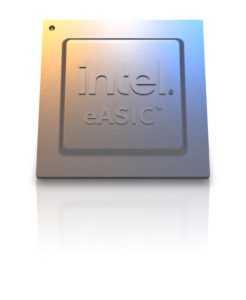
EDACafe Editorial Roberto Frazzoli
Roberto Frazzoli is a contributing editor to EDACafe. His interests as a technology journalist focus on the semiconductor ecosystem in all its aspects. Roberto started covering electronics in 1987. His weekly contribution to EDACafe started in early 2019. Intel FPGA news; Ferroelectric Memory; Micron’s 176-layer NAND; TSMC’s Phoenix fab; Tesla security issueNovember 23rd, 2020 by Roberto Frazzoli
Step-by-step instructions on how to steal a Tesla are probably this week’s most curious news, even accompanied by a video (by the way: the security flaw has already been fixed by Tesla). But first, the usual weekly news summary. PSS 2.0 draft available for public review Accellera has announced the availability of the Portable Test and Stimulus Draft Standard 2.0 (PSS) for public review. New major features intend to improve the usability of the standard and expand its portability and flexibility to a broader class of verification challenges. Public review was opened on November 18 and will close on December 18, 2020.
Intel N5X structured ASIC, Open FPGA Stack At Intel FPGA Technology Day – which took place on November 18 – Intel announced its eASIC N5X structured eASIC family, with an Intel FPGA compatible hard processor system, and the new Open FPGA Stack (OFS), a source-accessible hardware and software infrastructure delivered through git repositories to create custom acceleration platforms and solutions. Intel OFS provides standard interfaces and APIs to enable greater code reuse, accelerate development and speed deployment. Intel has also recently announced a collaboration with French research institute CEA-Leti on advanced 3D and packaging technologies. Focused on smaller chiplets and on stacking technologies for 3D ICs, especially for HPC applications, the collaboration will be centered around a CEA-Leti technology based on a silicon active interposer. New funding for Ferroelectric Memory German startup Ferroelectric Memory (FMC) has completed a $20 million Series B funding led by the new investors M Ventures and imec.xpand, with participation of SK hynix, Robert Bosch Venture Capital, and TEL Venture Capital. The lead investor of Series A eCapital also participated in this round. FMC’s memory technology uses the ferroelectric properties of crystalline hafnium oxide (HfO2), which – in its amorphous form – is already the gate insulator material of every CMOS transistor. FMC’s technology makes it simple to transform amorphous HfO2 into crystalline ferroelectric HfO2. This way, every standard CMOS transistor and capacitor can be turned into a non-volatile memory cell: a ferroelectric field-effect transistor (FeFET) or capacitor (FeCAP). According to the company, in addition to its high speed, ultra-low power, CMOS logic compatibility, reduced manufacturing cost, and extreme temperature stability, FMC’s technology provides complete magnetic immunity and high radiation resistance. FeFETs and FeCAPs can be integrated into CMOS production lines using existing equipment. Micron’s 176-layer 3D NAND flash memory Traditional non-volatile memories are advancing, too. Micron Technology has recently begun volume shipments of the world’s first 176-layer 3D NAND flash memory. Compared with the company’s previous generation of high-volume 3D NAND, Micron’s 176-layer NAND improves both read latency and write latency by more than 35%. It also offers improved quality of service, a critical design criterion for data center SSDs, and a maximum data transfer rate at 1,600 megatransfers per second (MT/s) on the Open NAND Flash Interface (ONFI) bus. Marvell’s 112G SerDes Marvell has unveiled the industry’s first 112G 5nm SerDes solution that has been validated in hardware. Manufactured by TSMC, the DSP-based SerDes doubles the bandwidth of current systems based on 56G helping to propel 112G as the interconnect of choice for next generation 5G, enterprise, and cloud data center infrastructure. The solution also delivers power reduction of more than 25% compared to 7nm. TSMC gets city support for its planned Phoenix fab Officials in Phoenix, Arizona have reportedly approved a slate of financial incentives and government support for TSMC’s planned $12 billion fab. The city agreed to provide about $200 million to develop roads, sewers and other infrastructure, according to a notice from the city council. TSMC is reportedly conducting due diligence on several locations in Phoenix with a final decision to be made later. Belgian researchers demonstrate flaws in Tesla Model X keyless entry system As stated in a press release on the imec website, researchers from COSIC – an imec research group at the University of Leuven in Belgium – have discovered major security flaws in the keyless entry system of the Tesla Model X. They informed Tesla, which has recently released an over-the-air software update to mitigate the problem. The flaws concerned the Bluetooth Low Energy solution used in the key fob. Before the software update, the security weaknesses allowed Imec researchers to fool the entry system as shown in this video and as explained here: “To summarize, we can steal a Tesla Model X vehicle by first approaching a victim key fob within about 5 meters to wake up the key fob. Afterwards we can send our own software to the key fob in order to gain full control over it. This process takes 1.5 minutes but can be easily performed over a range of more than 30 meters. After compromising the key fob, we can obtain valid commands that will allow unlocking the target vehicle. After approaching the vehicle and unlocking it we can access the diagnostic connector inside the vehicle. By connecting to the diagnostic connector, we can pair a modified key fob to the car. The newly paired key fob allows us to then start the car and drive off. By exploiting these two weaknesses in the Tesla Model X keyless entry system we are thus able to steal the car in a few minutes”. The process was conducted using cheap, easily available hardware, as detailed in the press release. Acquisitions Synopsys has acquired Light Tec, a Europe-based provider of optical scattering measurements equipment. Light Tec’s solutions will be combined with Synopsys’ optical design software tools. PDF Solutions has entered into a definitive agreement to acquire Cimetrix (Salt Lake City, UT), a provider of factory connectivity software products used to get data from the equipment to improve manufacturing. Cimetrix connectivity products and platforms will be combined with PDF Solutions’ Exensio analytics platform powered by machine learning. MediaTek has reportedly announced that it will be spending around 2.4 billion yuan (approximately $85 million) to acquire Intel Enpirion power management chip product line related assets through its subsidiary Richtek. And a few weeks ago Intel announced it will acquire SigOpt, a San Francisco-based provider of a platform for the optimization of artificial intelligence software models at scale. Upcoming events Wide Bandgap Conference 2020 will take place as a virtual event on December 8 and 9, offering a program that will obviously focus on wide bandgap power electronics materials: silicon carbide (SiC) and gallium nitride (GaN). |
|
|
|||||
|
|
|||||
|
|||||









